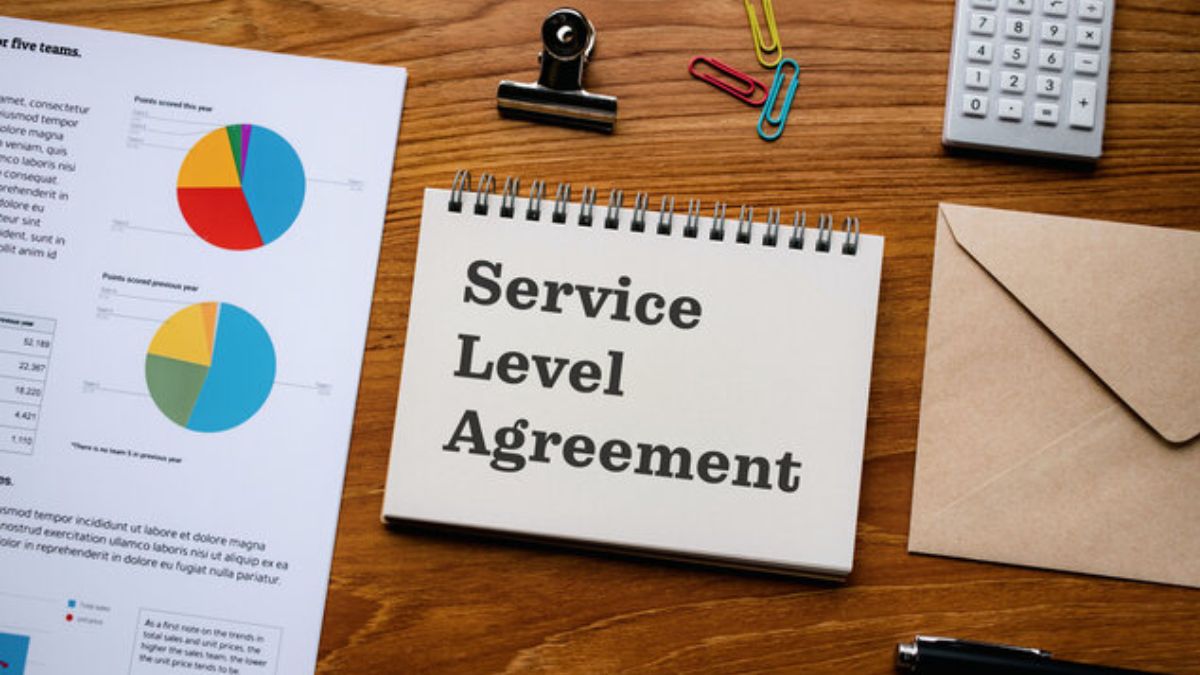Why Are Contracts Important?
Contracts are an essential part of any business transaction or partnership. They outline the terms and conditions of an agreement, establish expectations, and protect both parties in case of any disputes. However, creating a contract can be a complex process, and even small errors can have significant consequences.
Owning a business requires you to learn how to write contracts. A legally binding agreement between two or more parties engaging in an exchange of value, typically the sale of goods or services, is referred to as a contract. It outlines each party’s duties and responsibilities and holds them accountable to the original contract. Any business transaction must include a contract because it secures the terms of the deal and safeguards both parties interests if they are not satisfied.
Also Read: Contract management vs contract administration
When to Consider Using a Contract?
It’s a good idea to learn about whether a contract is even necessary for the business transaction before learning how to draw up a contract. Below points should be considered:
1. Are things, like a car or house, being bought, rented, or leased as part of the business transaction?
2. Does the deal involve the business taking on a new employee or forming a partnership?
3. Is there a sale of intellectual property, like a book or computer program, included in the transaction?
4. Is the buyer agreeing to pay for services performed, such as engaging a construction crew for a significant project or a cleaning staff to come in multiple times per week over an extended period of time?
To ensure that all parties are aware of their roles and responsibilities, a contract must be used in any of these circumstances, as well as many more. Keep in mind that if a dispute arises or one or more parties fail to uphold their end of the bargain, a handshake agreement between two parties, even close friends or family, usually won’t hold up in court.
Also Read: Signature guarantee vs notary
Steps for How to Write a Contract Agreement
In this step-by-step guide, we will walk you through the process of how to make a contract agreement like a pro.
- Define the Purpose of the Contract
- Identify the Parties Involved
- Outline the Terms of the Agreement
- Define Payment Terms
- Address Confidentiality and Non-Disclosure
- Include Termination and Cancellation Clauses
- Define Dispute Resolution Procedures
- Review and Revise the Contract
- Sign the Contract
- Maintain and Update the Contract
Step 1: Define the Purpose of the Contract
Before you start drafting a contract, you need to define the purpose of the agreement. Ask yourself: what is the goal of this contract? What problem are you trying to solve or what objective are you trying to achieve? Make sure the purpose of the contract is clear and specific.
Also Read: Can I notarize for a family member in NY
Step 2: Identify the Parties Involved
Once you’ve defined the purpose of the contract, you need to identify the parties involved. This includes the names and contact information of both parties, as well as any other relevant information such as their legal entity or business name. Make sure to spell the names correctly and include any relevant titles or positions.
Also Read: What can contract management software ensure
Step 3: Outline the Terms of the Agreement
Next, you need to outline the terms of the agreement. This includes the scope of the agreement, the responsibilities of each party, and any specific deadlines or milestones that need to be met. Be as detailed as possible to avoid any misunderstandings or disagreements later on.
Also Read: How to write a contract proposal
Step 4: Define Payment Terms
If the agreement involves payment, you need to define the payment terms. This includes the amount of payment, the payment schedule, and any other relevant details such as payment method or currency. Make sure to be clear about when and how payment will be made to avoid any confusion or disputes.
Also Read: What is CLM
Step 5: Address Confidentiality and Non-Disclosure
If the agreement involves confidential information or intellectual property, you need to address confidentiality and non-disclosure. This includes outlining what information is considered confidential, who has access to the information, and how it will be protected. Make sure to include any non-disclosure or confidentiality agreements as necessary.
Also Read: Adding an addendum to a contract
Step 6: Include Termination and Cancellation Clauses
Contracts can be terminated or cancelled for a variety of reasons, and it’s important to include clauses that address these possibilities. This includes outlining what circumstances would result in termination or cancellation, what the consequences would be, and any specific procedures that need to be followed.
Also Read: Contract lifecycle management blockchain
Step 7: Define Dispute Resolution Procedures
In case of any disputes or disagreements, it’s important to define dispute resolution procedures. This includes outlining the steps that need to be taken to resolve the dispute, such as mediation or arbitration. Make sure to be specific about the process and any relevant timelines.
Also Read: Types of breach of contract
Step 8: Review and Revise the Contract
Once you’ve drafted the contract, it’s important to review and revise it. Make sure that all of the terms and conditions are clearly outlined, and that there are no inconsistencies or ambiguities. It’s also a good idea to have legal counsel review the contract creation steps to ensure that it is legally binding and enforceable.
Also Read: Legal contract definition
Step 9: Sign the Contract
Once the contract has been reviewed and revised, both parties need to sign the contract. This includes dating and adding any necessary handwritten signatures, electronic signatures, initials, or stamps. Make sure to keep a copy of the signed contract for your records.
Step 10: Maintain and Update the Contract
Finally, it’s important to maintain and update the contract as necessary. This includes keeping a record of any changes or modifications, as well as reviewing and updating the contract periodically to ensure that it is still relevant and enforceable. Legitt Contracts helps users to create, sign and automatically track contracts on its AI-enabled application.
Also read: Writing a contract proposal
What to Include in a Contract?
The following details should be taken into account before writing a contract agreement:
1. When the contract starts and when it ends
2. The names of all participants to the transaction and any important 3. terminology and definitions
4. The items and services bought and sold in the transaction
5. Terms, conditions, and dates pertaining to payments, projects, and payment schedules
6. Missed deadlines, unfinished work, contract violations, damages disagreements and how to address them
One of the biggest mistakes people make when establishing a legal agreement is not providing enough specifics. When in doubt, be as specific as you can while keeping your writing straightforward. Here is a link to some sample contracts that show you what to put in a contract and how to draw one out.
Did you find this article worthwhile? More engaging blogs about smart contracts on the blockchain, contract management software and electronic signatures can be found in the Legitt Blogs section. You may also contact Legitt to hire the best contract lifecycle management services and solutions.
Also read: Contract Management and Administration
FAQs on How to Write a Contract
How do you identify the parties to the contract?
To identify the parties to the contract, you need to determine who will be entering into the agreement. This includes obtaining their legal names, contact information, and any relevant business or entity names. Make sure to spell their names correctly and include any necessary titles or positions.
Can a smart contract be binding even if it is not in writing?
Yes, a smart contract can be binding even if it is not in writing, as long as it meets the legal requirements for a contract, such as having mutual assent, consideration, and a clear intention to create a binding agreement.
How do you determine the scope of the contract?
To determine the scope of the contract, you need to define the boundaries of what the agreement will cover. This includes outlining the specific tasks, services, or products that will be provided, as well as any limitations or exclusions. Be as specific as possible to avoid misunderstandings or disputes.
What are the essential elements of a contract?
The essential elements of a contract include offer and acceptance, consideration, capacity, legality, and intention to create a binding agreement. These elements ensure that the contract is legally binding and enforceable.
Can you use templates or sample contracts to write a contract?
Yes, templates or sample contracts can be used as a starting point for creating a contract. However, it's important to customize the template to fit the specific needs of the parties involved and to ensure that all legal requirements are met. Legitt Contracts offers a wide variety of templates to create contracts.
What is the difference between a unilateral and bilateral contract?
A unilateral contract is an agreement in which only one party makes a promise or undertaking, while a bilateral contract involves promises or undertakings made by both parties. In a unilateral contract, acceptance is typically shown through performance, while in a bilateral contract, acceptance is shown through a return promise.
What is the role of consideration in a contract?
Consideration is something of value exchanged between the parties in a contract. It is essential to create a binding agreement and represents the bargained-for exchange that each party gives or receives as part of the agreement. Without consideration, a contract may be deemed unenforceable.
Can a contract be formed by contract management softwares?
Yes, contract management tools like Legitt can help create contracts. The software is a tool used to facilitate the creation, execution, and management of contracts, but it still requires human input to create a valid and legally binding contract.





















